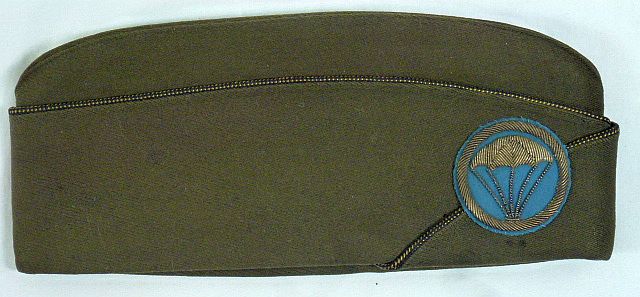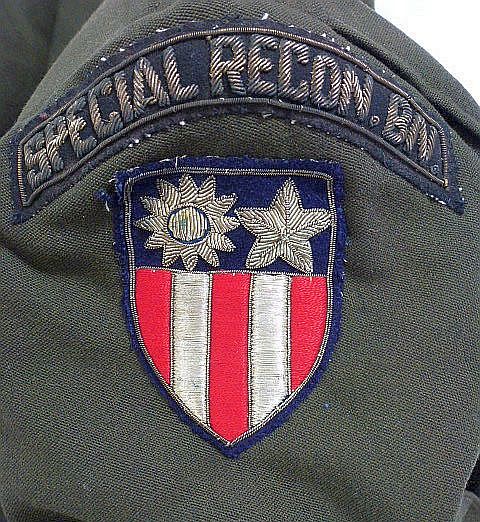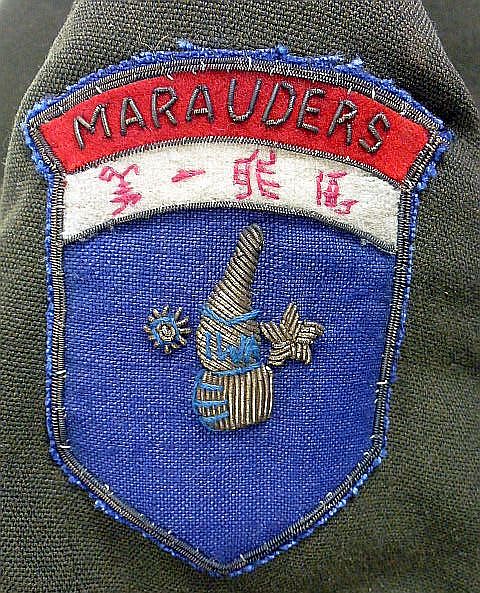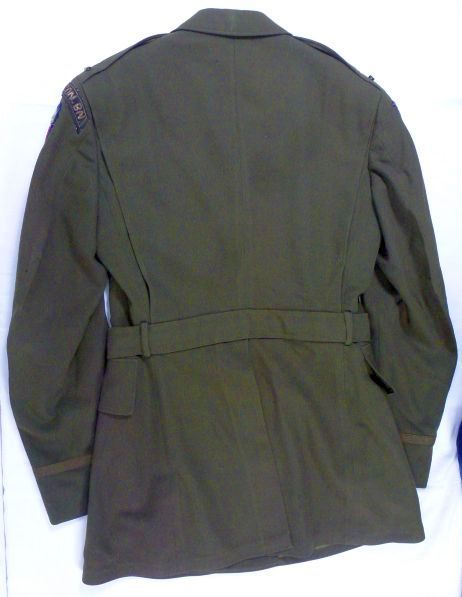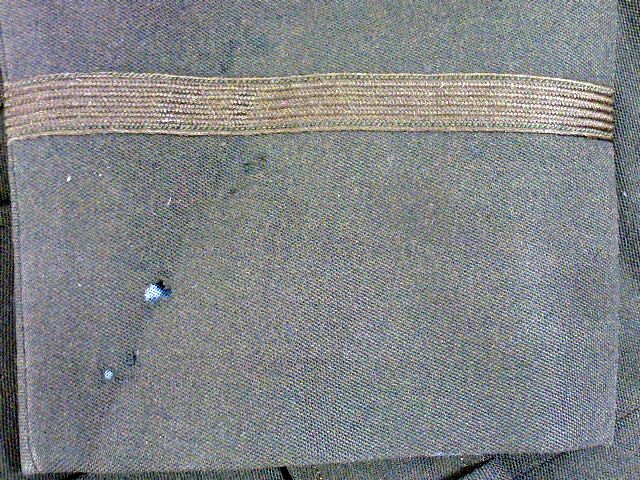OSS Special Recon Bn. / China Marauder Tunic & Cap
$5,875.00
A remarkable and extraordinarily rare set comprised of the United States Army officer four pocket tunic and overseas cap of a Lieutenant in the Office of Strategic Services (This jacket was acquired together with the same officer’s “Ike” jacket, which is being offered separately on this site). The insignia and ribbons on this tunic indicate that this man was both a qualified paratrooper and an infantry officer. He served in combat in Europe as a member of the OSS 2671st Special Reconnaissance Battalion and then, like a number of the members of the OSS, he served in China with the 1st War Area Marauder Corps. The tunic is the belted, four pocket uniform jacket of a U.S. Army Officer. The interior bears a retailer’s label in addition to the “Regulation Army Officer’s Uniform” label. The interior pocket contains a Philadelphia Quartermaster Depot tag specifying a printed date of March 14, 1943, and that label is initialed by a government inspector and stamped with an inspection date of January 30, 1943. The tag provides a stated size of 36 Long. The left breast carries a superb bullion paratrooper wing, embroidered in silver metallic thread on a wool base with blue colored threads sewn into the center area of the shroud lines to indicate “Parachute Infantry”. Below the paratrooper wings are found a single ribbon for the Bronze Star (plastic covered, pin back); below that is a ribbon bar with the ribbons for the American Defense Medal; the European Theater Medal with one campaign star; and the Pacific Theater Medal (this ribbon bar is plastic covered and pin back); and finally a third ribbon bar with a World War II Victory Medal and the China Liberation Ribbon (the Victory Medal ribbon is plastic covered. The China Liberation ribbon was awarded by the Nationalist Chinese Government to the Americans who had fought in China during the war. The ribbon never had a corresponding medal. the China ribbon is not plastic covered. This third ribbon bar, like the two above it, is pin back). The shoulders of the tunic carry pin back rank insignia of a Second Lieutenant. The lower left sleeve has four overseas stripes reflecting two years of service outside of the United States. The left shoulder bears a very fine theater made bullion patch for the China Burma India Theater, above which is the large, theater made bullion “Special Recon. Bn.” arc that was worn by the members of the OSS 2671st Special Reconnaissance Battalion. On the left “combat unit” shoulder is an amazing, theater made, example of the insignia of the Chinese “1st War Area Marauder Corps”. That patch is bullion embroidery on wool. The lapels display the insignia of an Army Infantry officer. The overseas cap which accompanies the tunic is the standard officer cap, carrying a Second Lieutenant bar on one side and, on the other, a splendid large, theater made, bullion and wool patch for the parachute infantry. The tunic is in generally excellent condition. It has six scattered holes, five of which are very small and barely noticeable. One hole, on the lower right cuff, is somewhat more noticeable but its position means that it is not at all distracting. There is no name within the tunic, but the original insignia on the tunic may well make an identification possible. That insignia tells us that this junior officer served with the OSS, first in Europe and then in China as a Marauder. This immediately narrows down the number of men who could have worn the tunic. Beyond this, the ribbons reflect that the man who wore this tunic was serving in the military before the attack on Pearl Harbor, thus entitling him to the American Defense Medal. The tunic was, in all probability, tailored for the officer and adorned with the insignia after the officer returned to the United States. Yet the tunic reflects the most junior officer rank in the Army. This all suggests that the original owner of the tunic was an enlisted man in the Army prior to Pearl Harbor. After the war began, he was qualified as a paratrooper and joined the Office of Strategic Services, which was established in June of 1942. This paratrooper could then have been sent to Europe before he had been in the United States for a full year, meaning he didn’t qualify for the American Campaign Medal, which is not present on the ribbon bars. Ultimately, by the time that the end of the war was approaching, his overseas service in combat for the OSS warranted that he be commissioned as an officer, which would have made him a Second Lieutenant. The number of men with this type of service record must be very, very small.
Overall the tunic and cap comprise an extraordinary example of a uniform set worn by a paratrooper and combat officer of the Office of Strategic Services, one of the most famed of all American military formations in the Second World War, and it bears absolutely stunning examples of some of the rarest American military insignia from the war.
Sold!


